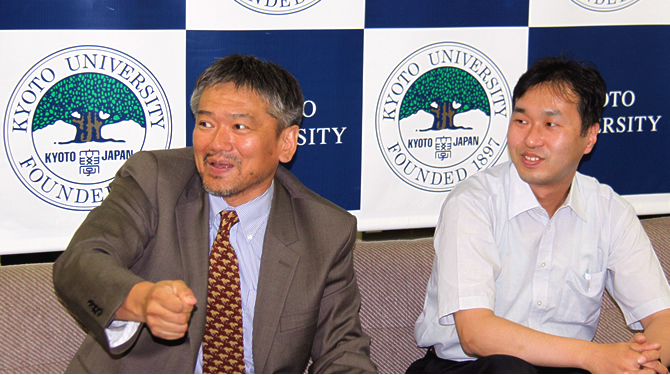[Opt Express] Opening the Door to Video T-Ray Bio-Imaging
A Small Fiber Laser System is Successfully Used to Generate High Efficiency Terahertz Pulses
June 26, 2009
Kyoto University and Aisin Seiki Co., Ltd. announced June 25 that they had successfully generated high efficiency terahertz pulses (commonly known as "T-Rays") using a commercial sub-picosecond fiber laser.
According to the team, these are the highest power waves ever emitted using a conventional fiber laser. This result was achieved by optimizing the output from terahertz pulse emitting dielectric crystals combined with light using an electro-optic modulator.
The maximum electric field of the terahertz pulses, say Prof. Koichiro Tanaka of Kyoto University's Institute for Integrated Cell-Material Sciences (iCeMS) and Asst. Prof. Masaya Nagai of the university's Graduate School of Science (also serving as a JST* PRESTO** researcher), are equivalent to electric field strengths induced in typical electronic devices. This will open the door to the development of a wide range of possible "terahertz electronics" applications, including in high speed communication switching, manufacturing, security, and medical fields.
In particular, given terahertz waves' sensitivity to water and to biological tissues, there is great expectation that this announcement will accelerate the development of a new generation of video-rate bio-imaging equipment.
Results of the research have been published in the online journal Optics Express.
This research has been supported in part by a Grant-in-Aid for Creative Scientific Research (18GS0208) from the Ministry of Education, Culture, Sports, Science, and Technology (MEXT) of Japan.

(From left) Prof. Koichiro Tanaka, Asst. Prof. Masaya Nagai
*JST:
Japan Science and Technology Agency (JST) aims to establish Japan as a nation built on the creativity of science and technology, as a core organization for implementing Japan's science and technology policy in line with the objectives of the Science and Technology Basic Plan.
** PRESTO:
PRESTO is a proposal-oriented research promotion program which aims at cultivating the seeds of precursory science and technology by promoting basic researches in which each researcher's originality and free ideas can be fully realized.
Related coverage:
- The Nikkei Business Daily (June 26, 2009, P11) [in Japanese]
- The Kyoto Shimbun (June 26, 2009, P29) [in Japanese]
- The Nikkan Kogyo Shimbun (June 26, 2009, P23) [in Japanese]
- Stock Station (June 26, 2009) [in Japanese]
